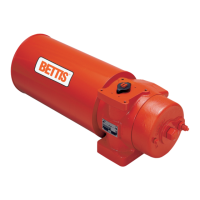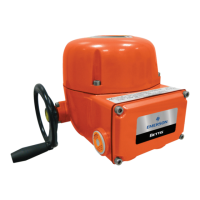October 2015
Service Instructions
VA001-196-30 Rev. 1
6
Section 2: Actuator Disassembly
Actuator Disassembly
Section 2: Actuator Disassembly
2�1 General Disassembly
WARNING: DANGEROUS GAS AND/OR LIQUIDS
It is possible that the actuator may contain a dangerous gas and/or liquids. Ensure that all
propermeasureshavebeentakentopreventexposureorreleaseofthesetypesof
contaminants before commencing any work.
CAUTION: DO NOT EXCEED OPERATING PRESSURE
Pressureappliedtotheactuatorisnottoexceedthemaximumoperatingpressurerating
listed on the actuator name tag.
NOTE:
Before starting the general disassembly of the actuator it is a good practice to operate
actuator with the pressure used by the customer to operate the actuator during normal
operation. Notate and record any abnormal symptoms such as jerky or erratic operation.
2�1�1 Remove all operating pressure from actuator.
2�1�2 Record the settings of stop screw or M3 jackscrews (1-70) and (4-30) before stop
screws are loosened or removed.
NOTE:
InplaceofstopscrewstheactuatormaybeequippedwithoneortwoES(ES=Extended
Stops) or M3/M3HW (1-70) located on outboard end of housing (1-10) and M3/M3HW (4-
30) on the end cap (4-20).
2�2 Pneumatic Cylinder Disassembly
NOTE:
Review Section 2 steps 2.1.1 through 2.1.2 before proceeding with cylinder disassembly.
2�2�1 Removehexnut(4-40)asfollows:CBB315throughCBB725standardendcapstop
screworextendedstop(ES)usestep2.2.1.1.CBB315throughCBB725with-M3or
-M3HW use step 2.2.1.2.
2�2�1�1 For CBB315 through 725:endcapstopscreworextendedstopscrew(ES)
2�2�1�1�1 Loosenandremovehexnut(4-40)andwasher(4-90)from
stop screw (4-30) located in end cap (4-20).
2�2�1�1�2 Remove stop screw (4-30) from the end cap (4-20).

